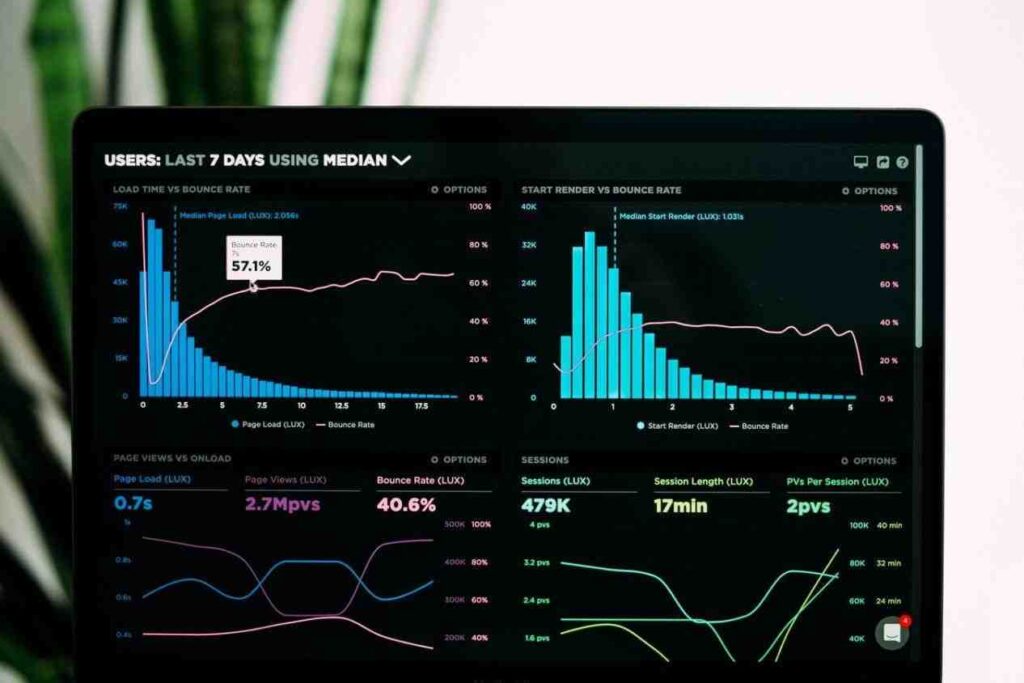10 Ways to Speed Up Your Website and Improve Conversions in 2021

Speed Up Your Website and Improve Conversions in 2021
Your website’s loading speed plays a significant role in determining your site’s success as it can influence page views, your position in the search engine rankings, and ultimately, your conversions. Through this article we will let you know How to Speed Up Your Website.
But how fast should your website be? Well, experts at Design Rush, an NYC web design company, say that your website should take no longer than five seconds to load.
Each extra second of loading time will drag your conversions down by an average of 4.4%.
With that supposed, start by speed testing your website. If you find yourself below the five-second mark, it might be time to make some changes to your website.
So, without further ado, let’s take a look at some ways in which you can speed up your website.
Table of Contents
1. Optimize Images
Images are one of the maximum common causes of slow loading speeds. That’s because, unlike simple texts, image files are much more significant as they contain a lot of information.
You see, unoptimized images can take up a few megabytes of space. And given that Google recommends having a web page that is no larger than 500 kilobytes, images can be a significant problem, especially if you’re using many of them.
However, images are an integral part of your content, as they make it more appealing to the user.
So you can’t compromise on their quality. But, how can you improve the loading speed without reducing image quality? Well, simply by reducing their file sizes.
You can start by compressing the images before you upload them to your site.
For example, if you’re using WordPress, Smush is a great plugin that will automatically compress your images or, if your website is on another type of platform, you can use Compress JPEG.
2. Remove Unnecessary Plugins
Speaking of WordPress, remember to keep an eye on your plugins. Yes, plugins are essential for your website.
However, because they are so easy to use and add more functionality to your site, it’s easy to end up having more plugins installed than you need.
That will cause multiple problems, slow loading speeds being one of them.
With that said, take your time and figure out which plugins you can get rid of. By doing this, you will not only improve your website’s performance but doing maintenance will also become more accessible.
3. Enable Browser Caching
Here’s the thing: when a user first visits your website, he will have to download its HTML documents, JavaScript files, images, etc., which may take a few seconds.
Now, if browser caching is disabled, whenever the user revisits your website, his browser will have to download that all over again.
However, by turning on caching, the data that has been downloaded will remain stored in the browser, making your website load much faster for returning visitors.
Also Read: How to Get a Best Website Designer?
4. Use a Content Delivery Network
A CDN shortens the time it takes for your website’s information to travel from a server to the user. The way it works is by using a network of servers that are scattered across the globe.
With that said, when a user enters your website, the information will be pulled from the server that’s closest to them, reducing the loading time as a result.
There are plenty of CDNs available, both free and paid, like Cloudfare or StackPath, for example.
5. Choose the Right Hosting Option
People will often choose the cheapest hosting option they can find. While this might work initially, an upgrade will be needed for optimal loading speeds at one point or another, especially when their websites start to generate more traffic.
If you find yourself in this situation, spend the time and figure out which hosting option is best suited to your needs. You can choose between shared, VPS, or dedicated hosting.
The former works the best for new websites, as it’s the cheapest option. However, because you’ll get to share specific resources with other sites hosted on the same server, like disk space and RAM, your loading speeds will be negatively impacted once you start to gain traction.
The latter is the most expensive, but it’s also the best for loading speeds. It should be the go-to option for websites that get many visitors, whereas VPS is the middle ground between the other two.
It’s best to upgrade gradually, as your website gains more traffic over time.
6. Use Lazy Loading
This is a commonly used tactic for improving a website’s performance, mainly if it contains many images. The way it works is by loading the content above the fold first, followed by the rest of the page once it’s done.
Or, you could even set it in so that the content that’s not visible on the user’s screen won’t load at all until he scrolls further down the page.
The user’s browser wouldn’t have to load all of your website’s content at once; thus, the initial loading speed will be much faster.
7. Host Videos Externally
Like images, videos will take up a lot of space and negatively impact your website’s performance as a result.
However, unlike images, compressing videos is not such a good idea because you’ll most likely lower their quality.
That’s why you should upload your videos on other third-party platforms first, like YouTube, and embed them to your website.
8. Reduce HTTP Requests
An HTTP request happens when the user’s browser asks for something from the server, like an image, HTTP file, etc. With each request, the server will send a response, and that takes time.
In other words, the more HTTP requests you have, the longer it will take for your website to load.
Google suggests that you should have no longer than 50 HTTP requests. You can check the number of requests by doing a speed test.
There are two ways in which you can reduce the number of HTTP requests. You can either delete some of them or combine several files into one.
With that said, make sure to look through your files and see which ones might not be necessary.
9. Reduce Redirects
Speaking of a high number of HTTP requests, the number of redirects may also contribute to this issue.
Redirects are the instructions that take the user from one location to another automatically. They are typically used for redirecting users to device-specific URLs.
For example, when a visitor using a mobile device enters your website, he will be redirected from “www.example.com” to “m.example.com,” which is a good scenario.
However, your redirect pattern may also take the user from “www.example.com” to “m.example.com” to” m.example.com/home.” As you can see, the last one is unnecessary, and it will increase the time it takes for the user to get to your website.
That’s why you need to spot and eliminate any excess redirects.
10. Update Regularly
And finally, in case you’re using WordPress, or any other Content Management System (CMS), keep in mind to constantly check for new updates.
They almost always come with fixes and other improvements that may increase your website’s performance.
Final Words
Optimizing your website’s loading speed can be a daunting task.
However, it’s worth it in the long run, as it will not only improve your conversion rate, but it can also reduce your bounce rate and improve your position in the search engine rankings.
Also Read: Top Five SEO Trends to Look Out For in 2021




